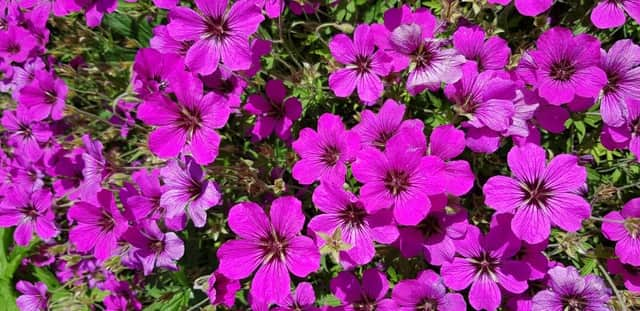GARDENING: Thinking ahead for a great garden in 2021


Be it a list of jobs for the week ahead, a structural project for autumn/winter or, a new approach from next year onward. This fellow`s thoughts are currently occupied with fresh vegetable supplies between now and next spring, and ornamental displays that will entertain us in 2021.
Winter brassicas, sprouts, cabbage and broccoli, are so valuable when the weather closes in but they need protection from common pests. Main offender is the cabbage white butterfly which is already present in numbers. Fine mesh netting should be in place to prevent access to the underside of leaves where they lay clusters of eggs. When they hatch the resultant caterpillars can quickly ruin the crop.
Advertisement
Hide AdAdvertisement
Hide AdCabbage root fly can also be a problem. It lays eggs on the surface near the base of a plant, giving easy access to the hatchlings which migrate to the roots. Preventive options include firming the soil with heel and toe to finalise each planting or, fitting felt discs around the base of each stem.
Slugs are ever present, and now we have a general acceptance that poisonous baits are harmful to other living organisms, mechanical control is more widely practised. Countless strategies to keep them apart from valuable plant leaves. Physical barriers include copper rings, sheep's wool, gritty sand, upturned oranges cut in half, beer-filled pitfall traps. These pests are most active during hours of darkness, encouraging some enthusiasts to arm themselves with torch, forceps and collecting jar, and catch them in the act!
By comparison, growing a few potatoes to dig fresh for Christmas is so straight forward. If you have a polytunnel, cold frame or sheltered vegetable bed, there's just time to buy and plant `second cropping` tubers. As the weather changes cover them with fleece and dig as required.
We`ve just planted up several in pots that will stand outdoors until the arrival of colder weather forces a move to the greenhouse. The three varieties `Charlotte,` `Nichola` and `Maris Peer,` were planted as chitted tubers, five to a large pot. Because they had previously been subjected to a period of cold storage, they are now primed to grow on. In the past I've discovered sprouting potatoes in home storage circa late August, and pot-grown them successfully for Yuletide celebrations. It's a rather special treat having new potatoes served up at that time of year. Try it!
Advertisement
Hide AdAdvertisement
Hide AdThere's still plenty of mileage in the summer bedding and container displays if we keep watering, feeding, and deadheading. Lots more colour to come from perennials in the mixed borders too. So, thoughts automatically turn to what happens beyond that.
Waiting in the wings we have winter shrubs that offer colourful leaves, bark, and blooms, some fragrant, whatever the weather. And a diversity of bulbs, currently out of sight, will spring up to join the show when the time is right. So, what else can we add to the mix? A quick glance around the garden confirms that polyanthus and primula plants retained from last spring`s displays will be fit to deliver again.
When removed from containers last May bigger clumps were divided and planted in rows on a piece of spare land. Constant watering, continued through this dry summer, has saved the day. They will be ready for late autumn planting that culminates in glorious spring displays.
Dividing certain plants into sections is one of the easiest ways to increase your stock of herbaceous perennials. When applied to polyanthus and primulas, it can be done in late spring when they complete flowering or autumn before replanting. Polyanthus `Stella Mixed` planted five years ago offers a good range of colours and grows vigorously so we've saved our
Advertisement
Hide AdAdvertisement
Hide Adfavourites ever since. A single plant of Primula 'Garryard Guinevere` bought at the same time, has now become a group of eighteen because I love it`s bronze leaves and pink flowers.
Foxgloves are biennial plants, so in autumn I round-up some of the self-sown with decent sized rosettes of leaves and plant them in groups. This year we've saved seed of a striking white variety to pursue the colour line through the next generation. We`ve also taken delivery of twelve new named cultivars one of which is `Dalmation White.`